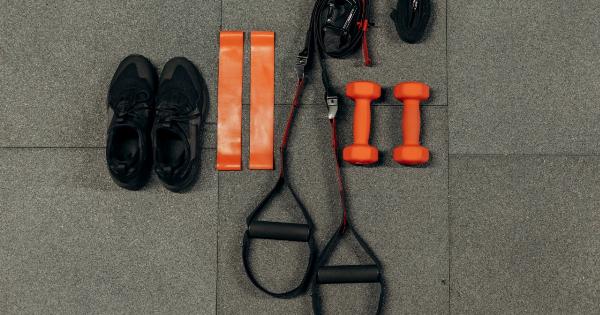Osteoporosis is a bone disease where the bones become weak, brittle, and fragile. This disease can be quite dangerous, as it increases the risk of fractures, even with minor falls or injuries. The most affected bones are the hip, spine, and wrist.
Osteoporosis is a common problem, and it is estimated that over 53 million people in the USA have either osteoporosis or are at high risk of developing it.
What Causes Osteoporosis?
Osteoporosis is caused by a decrease in the mineral density of bones. This means that the bone becomes lighter, less compact, and weaker. Typically, bones are made up of minerals, such as calcium and phosphate, which give them strength and hardness.
Bones are constantly breaking down and reforming, and if this process is not balanced, the bones can become weak. There are many factors that can cause osteoporosis, including:.
- Age
- Gender (women are more prone to osteoporosis than men)
- Family history of osteoporosis
- Low levels of vitamin D and calcium
- Smoking
- Excessive alcohol consumption
- Lack of exercise
- Long-term use of certain medications, such as steroids
How Can Your Daily Habits Affect Your Risk of Osteoporosis?
Many daily habits can affect your risk of developing osteoporosis. These habits can vary from lifestyle choices to dietary habits. The following are some of the daily habits that can cause or increase your risk of osteoporosis:.
1. Lack of Physical Activity
Lack of physical activity can lead to osteoporosis. Bones need to be stimulated and worked to stay strong and healthy. Physical activity helps to increase bone density and delay the loss of bone density that comes with age.
Weight-bearing exercises such as walking, running, and dancing, are particularly good for maintaining strong bones. Encourage your children to be active and to enjoy sports that involve running and jumping.
2. A Poor Diet
A poor diet is another risk factor for osteoporosis. A diet rich in calcium and vitamin D is essential for strong bones. Low calcium intake can lead to a decrease in bone density, and it can increase the risk of fractures.
Similarly, vitamin D is essential for absorbing calcium from food. You can get vitamin D from food sources such as fatty fish, dairy products, and eggs. The sun is also an excellent source of vitamin D. It’s essential to get an adequate amount of these nutrients in your diet to help maintain strong bones.
3. Smoking
Smoking can cause osteoporosis. Smoking can decrease bone mass and can make bones more susceptible to fractures. Smoking also causes other health problems, so quitting smoking should be a priority to improve overall health.
4. Excessive Drinking
Excessive alcohol consumption can increase your risk of fracturing bones. Heavy drinking can decrease the absorption of calcium and reduce bone density. It can also contribute to falls and accidents that can lead to fractures.
5. Medications
Long-term use of certain medications can increase the risk of osteoporosis. Medications such as steroids, can reduce bone mass, leading to fractures.
It is essential to talk to your doctor about the risks and benefits of any medication you are taking, and take measures to prevent loss of bone density.
6. Lack of Sunlight
Exposure to sunlight is essential for the body to produce vitamin D. Vitamin D is crucial for the absorption of calcium in the body, and a deficiency can lead to osteoporosis.
During the winter months, when sunlight is limited, you can take supplements to ensure that you get enough vitamin D.
Preventing Osteoporosis
Preventing osteoporosis is possible through lifestyle changes and medication. Here are some of the ways you can help maintain strong bones:.
1. Exercise Regularly
Weight-bearing exercises can help maintain and improve bone density. Regular exercise can help in reducing the risk of osteoporosis.
Recommended exercises include brisk walking, jogging, aerobics, dancing, and high-impact sports such as tennis and basketball.
2. Eat a Balanced Diet
Eating a balanced diet with sufficient calcium and vitamin D is essential for strong bones. Foods rich in calcium include dairy products, leafy vegetables, nuts, and fish. Vitamin D is obtained from foods such as fatty fish, fortified cereals, and eggs.
Sun exposure is also essential for the production of vitamin D.
3. Quit Smoking
Smoking can lead to a decrease in bone mass and an increase in the risk of fractures. Quitting smoking can help improve overall health and reduce the risk of osteoporosis.
4. Limit Alcohol Consumption
Heavy alcohol consumption can increase the risk of fractures and decrease bone density. Limiting alcohol consumption to one or two drinks a day can help reduce the risk of osteoporosis and improve overall health.
5. Consult a Doctor
It is essential to consult a doctor if you think you may be at risk of developing osteoporosis. The doctor can recommend tests and medication that can help prevent bone loss, delay the onset of osteoporosis, and reduce the risk of fractures.
Conclusion
Osteoporosis is a serious condition that can lead to fractures and reduce mobility. However, it is preventable and manageable. By making lifestyle changes and consulting a doctor, you can help prevent and delay osteoporosis.






























